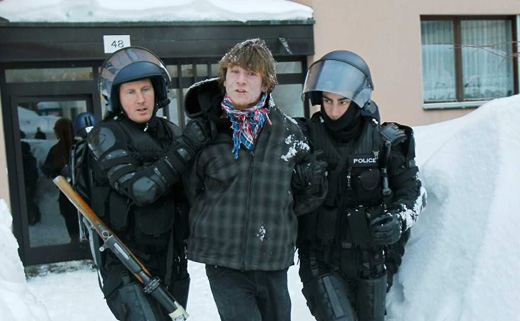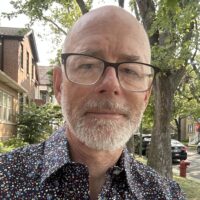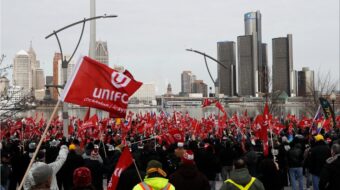
“Capitalism does not self-correct toward greater equality-that is, excess wealth concentration can have a snowball effect if left unchecked.” – Bill Gates, 2014
Days before global political and corporate leaders gathered at the World Economic Forum in Davos, Switzerland, Oxfam International released a new report showing that the gap between rich and poor “is a crisis reaching new extremes.”
The top 1 percent richest people in the world now own as much wealth as the bottom 99 percent. And the richest 62 people on the planet have as much wealth as half of the world’s population.
“Meanwhile, the wealth owned by the bottom half of humanity has fallen by a trillion dollars in the past five years,” according to the Oxfam report.
This extreme wealth concentration has led to the re-emergence of what French economist Thomas Piketty calls oligarchical rule, not seen since the Gilded Age.
The Oxfam study shows wealth concentration accelerating since 2000, due in large part to the mere concentration of economic and political power of the world’s wealthiest individuals and corporations.
“Economic and policy changes over the past 30 years – including deregulation, privatization, financial secrecy and globalization, especially of finance – have supercharged the age-old ability of the rich and powerful to use their position to further concentrate their wealth,” according to the report.
Wielding political power
The wealthy employ their power to affect government policy, budget priorities and allocations, subsidies and tax policy. For example, the rich hide $7.6 trillion in a global network of tax havens. The New York Times exposed the existence of a private tax system in the U.S. that allows the wealthy to write their own tax rules and shield billions of dollars of income.
They game financial markets. As of 2013, the wealthiest 1 percentholds 49.8 percent of stock and mutual fund assets, and the top 10 percent hold 90.9 percent.
The oligarchy has an outsized influence on politics, a situation which threatens our democratic institutions, as imperfect as they are. Money from wealthy individuals and corporations has cascaded into the electoral arena as a result of the U.S. Supreme Court’sCitizens United decision.
A few billionaires are among the main patrons of this year’s crop of Republican candidates for president. Just 158 families contributed half of the early money to the primary campaigns.
In her new book, Dark Money, investigative journalist and New Yorker staff writer Jane Mayer documents the extensive network of institutions created by the Koch brothers and other billionaires that has fueled the rise of the neoliberal right wing movement and efforts to eliminate all forms of government regulation on business.
Billionaires like Illinois Gov. Bruce Rauner and his cohorts are attempting to upend state politics and impose direct oligarchic rule. Michael Bloomberg, the billionaire former mayor of New York City, is considering a run for president and is prepared to tap $1 billion of his immense fortune.
Forming oligopolies
This is not all. Massive individual wealth concentration is interconnected with massive corporate wealth concentration. Drug giant Pfizer made waves when it announced its merger Nov. 23 with Allergan in a $160 billion deal to avoid paying U.S. taxes.
A few days later DuPont announced a $120 billion merger with Dow Chemical.
2015 quietly set a global record for corporate mergers and acquisitions of over $4.7 trillion in activity. In addition to the mega deals, there were nine transactions valued at $50 billion or more.
Many economists see this current wave of corporate mergers and acquisitions as the seventh great wave over the past 100 years. They include 1897 – 1907 (many iconic U.S. corporations were founded in this period including DuPont), 1916-1929, 1965-69, 1981-89, 1992-2000 and 2003 -2008.
The latest merger and acquisition wave is being facilitated by the massive amounts of cashthat global corporations are sitting on. According to financial observers, the current wave is 40% higher than previous ones in cross-border mergers and acquisitions. It has led to the creation of oligopolies in industries across the globe.
“We are seeing very high levels of concentration in key industries like food, healthcare and airlines,” American Antitrust Institute President Diana Moss told Corporate Crime Reporter.
Through their power, domestic and global oligopolies are able to suck up the lion’s share of corporate profits. According to the Atlantic, “In 2007, at the outset of the Great Financial Crisis, the 200 largest U.S. corporations accounted for over 30 percent of all gross profits in the economy (up from 13 percent in 1950), while the world’s 500 largest firms were taking in about 35-40 percent of all global revenue (up from less than 20 percent in 1960).”
The drive for profits
Karl Marx predicted this process of capitalistic monopolization over 150 years ago. Capital accumulation, the drive for maximum profits, is the essence of the capitalist system.
Capitalists boost profits by expanding their market share through acquisition. More profits can be gained through monopoly pricing rather than expanding production.
In the US, four major airline companies now control 70 percent of the air travel market. Five banks now control 50 percent of bank assets. Verizon and AT&T control two-thirds of the wireless market.
Twelve health insurance companies control two-thirds of the market, while in half the states just 2 corporations cover 70 percent of the privately insured population. Even our food supply is controlled by a dangerously few actors: four corporations control 85 percent of the breakfast cereal market, and another four control 82 percent of the meat packing market.
And indeed, we are paying more for these goods and services. In the healthcare field it is estimated that 80-90 percent of profits are due to monopoly pricing.”Food prices have gone up at a rate higher than inflation. We have seen documented evidence of fare increases following airline mergers,” says Moss.
And not only are monopolies gaining greater market share, they are also colluding with other monopolies in their industry on prices, research, shared facilities, etc.
There is another way
Where is this headed?
Extreme wealth inequality is deepening instability in the global economy, leading to more frequent and deeper crises. Crises that begin in one country or region can quickly spread worldwide. Witness the 2008 financial meltdown, which began in the U.S. and spread globally.
The massive shift in wealth upward is a tremendous drag on the global economy. It results in a growing crisis of under consumption as workers real wages have stagnated and declined, the growth of slavery, poverty, joblessness and homelessness. Whole countries, regions and continents are mired in prolonged economic crisis and stagnation.
In fact, Sam Webb, Fred Magdoff, and John Bellamy Foster assert stagnation, financialization and monopolization mark a new phase of capitalist development.
They argue that the greater the monopolization, concentration and centralization of production, the greater will be the resultant economic stagnation. The productive capability of industry has reached such a degree that it has saturated the global market with consumer products. The tremendous surplus value being produced by workers cannot find a profitable outlet and a larger share is accumulated by the global oligarchy at the expense of workers.
“Comparing economic growth between the 1950s and ’60s with the subsequent decades, the real GDP growth rate slows down from over 4 percent in the 1950s and ’60s, to around 3 percent for the 1970s to ’90s, to less than 2 percent for the 2000s,” write Magdoff and Foster.
To overcome the falling growth rate, capitalism increasingly turns to external stimulus, i.e. consumer debt and the bubble economy.
An alternative path of development is needed, one that radically redistributes wealth and curbs the power of wealthy individuals and corporations.
The Oxfam report proposes policy solutions like shutting down the tax havens, raising taxes on the wealthy and corporations, increasing wages, ending the wage gap between men and women, eliminating corporate and oligarchic money from politics, etc.
This is a good start, but more radical solutions are needed. These should include: elimination of vast corporate subsidies, forcing corporations to assume total costs for pollution and environmental damage, ending privatization and wage, working and living condition disparities in the global south and eliminating structural racism and discrimination against workers of color in the U.S. and other advanced capitalist countries.
Collective bargaining rights must be extended to all workers.
The public sector must be vastly expanded to include natural resources, banking and finance, healthcare, telecommunications and transport and the reallocation of budgetary resources to healthcare, education, transit and housing.
A massive rebuilding of the nation’s infrastructure is needed that will create millions of jobs and transition to a sustainable energy economy. Special measures are needed to redress historic racism, commonly called reparations, to achieve full equality in African American and other communities of color.
Implementing these reforms will require the election of radical anti-monopoly governments at every level and presume a much larger, more united and politically conscious people’s movement than exists at present.
The first step is the defeat of right wing extremists for president and stopping GOP majorities in Congress and statehouses in November.
In the meantime, the “crisis of extreme wealth inequality” will grow, and with it greater instability, continued crisis and deepening misery for the world’s working people – and greater struggle.
Photo: Swiss riot police officers arrest a demonstrator during a demonstration against the World Economic Forum in Davos, Switzerland. | AP










